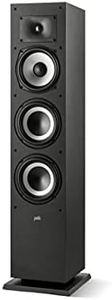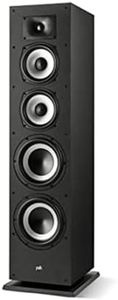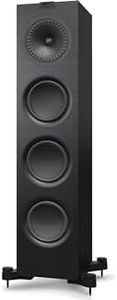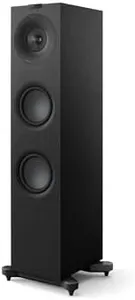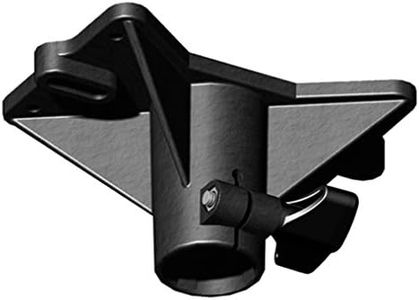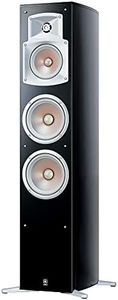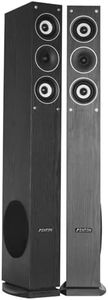We Use CookiesWe use cookies to enhance the security, performance,
functionality and for analytical and promotional activities. By continuing to browse this site you
are agreeing to our privacy policy
10 Best Floor Standing Speakers
From leading brands and best sellers available on the web.Buying Guide for the Best Floor Standing Speakers
Choosing the right floor-standing speakers can make a huge difference to your listening experience, whether you’re into music, movies, or gaming. These speakers are designed to stand on the floor and deliver powerful, immersive sound that can fill larger spaces. When picking a pair, it’s helpful to consider the size of your room, the type of music you enjoy, and how you plan to use the speakers. Understanding the main specifications will help you match the speakers to your space and personal preferences, ensuring you end up with a system that sounds great and fits your needs.Frequency ResponseFrequency response tells you the range of sounds the speakers can produce, from low to high notes, and is measured in hertz (Hz). A wider frequency response generally means the speaker can reproduce deeper bass and crisper highs. Lower numbers (like 30Hz) mean deeper bass; higher numbers on the upper end (like 20kHz) mean the ability to produce very high notes. If you love deep, punchy bass, look for speakers with a lower starting frequency. If clarity in vocals and instruments matters most, also check for a broad upper frequency response. Match the range to the content you most enjoy—bass-heavy music, cinematic soundtracks, or crystal-clear vocals.
SensitivitySensitivity measures how efficiently a speaker turns power into volume and is usually given in decibels (dB) with a standard power input. Higher sensitivity (like 90dB or above) means the speakers will play louder with less power, while lower sensitivity (below 87dB) will need more amplifier power to reach the same volume. If your amplifier or receiver isn’t very powerful, consider speakers with higher sensitivity to get the best performance without straining your equipment. If you already have a strong amplifier, lower sensitivity speakers can work just as well.
ImpedanceImpedance, measured in ohms (Ω), describes how much resistance the speaker gives to the electrical signal from your amplifier. Most floor-standing speakers are rated at 4, 6, or 8 ohms. It��’s important to match or be compatible with your amplifier’s recommended impedance—using speakers with too low of an impedance on an incompatible amp can cause overheating or damage. Generally, 8 ohms is standard and works with most gear, while 4 ohms might require a more robust amplifier. Always check your amp’s specs before choosing, especially if unsure.
Speaker Drivers and ConfigurationDrivers are the parts of the speaker that actually move air to create sound, and most floor-standing speakers include a combination of woofers (for bass), midrange drivers, and tweeters (for high notes). Some also have additional drivers or special arrangements, like multiple woofers for extra bass. More drivers generally mean better separation of sounds and can handle a wider range of audio, leading to richer and more detailed playback. If you listen to complex music or watch action-packed movies, a speaker with separate midrange and tweeter drivers can provide clearer, more immersive sound.
Physical Size and PlacementThe overall size and shape of floor-standing speakers matter both for sound and for fitting them into your room. Larger speakers generally produce stronger bass and fill bigger rooms more easily, but they need more space to perform properly. Some are designed to stand close to a wall, while others need more distance to sound their best. Before buying, consider the size of your room and where you can place the speakers so they’re not cramped or blocked. If you have a smaller room, more compact models may be better, while in larger spaces, bigger speakers can deliver the best experience.
Build Quality and Cabinet DesignThe material and design of the speaker cabinet can affect both the durability and sound quality of the system. Heavier, well-built cabinets made from dense materials help reduce unwanted vibrations, giving you clearer sound. Some have special shapes or internal bracing for even better performance. If you want a speaker that lasts and sounds great over time, look for solid build quality and thoughtful design features. Appearance also matters—pick something that fits well with your decor if visual harmony is important.
